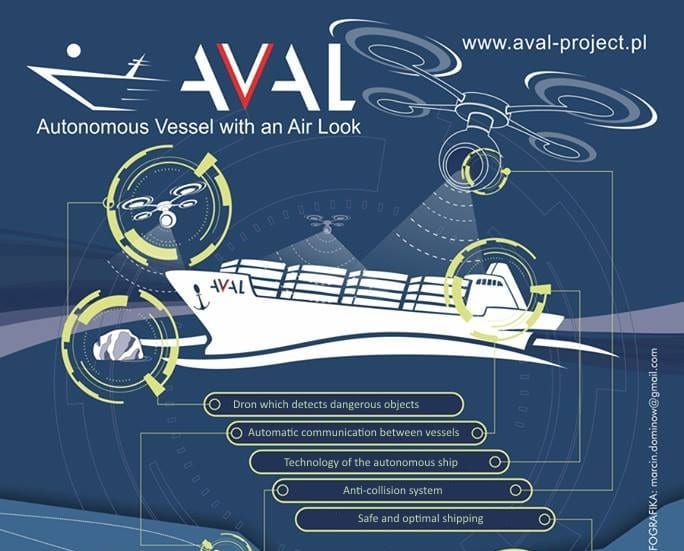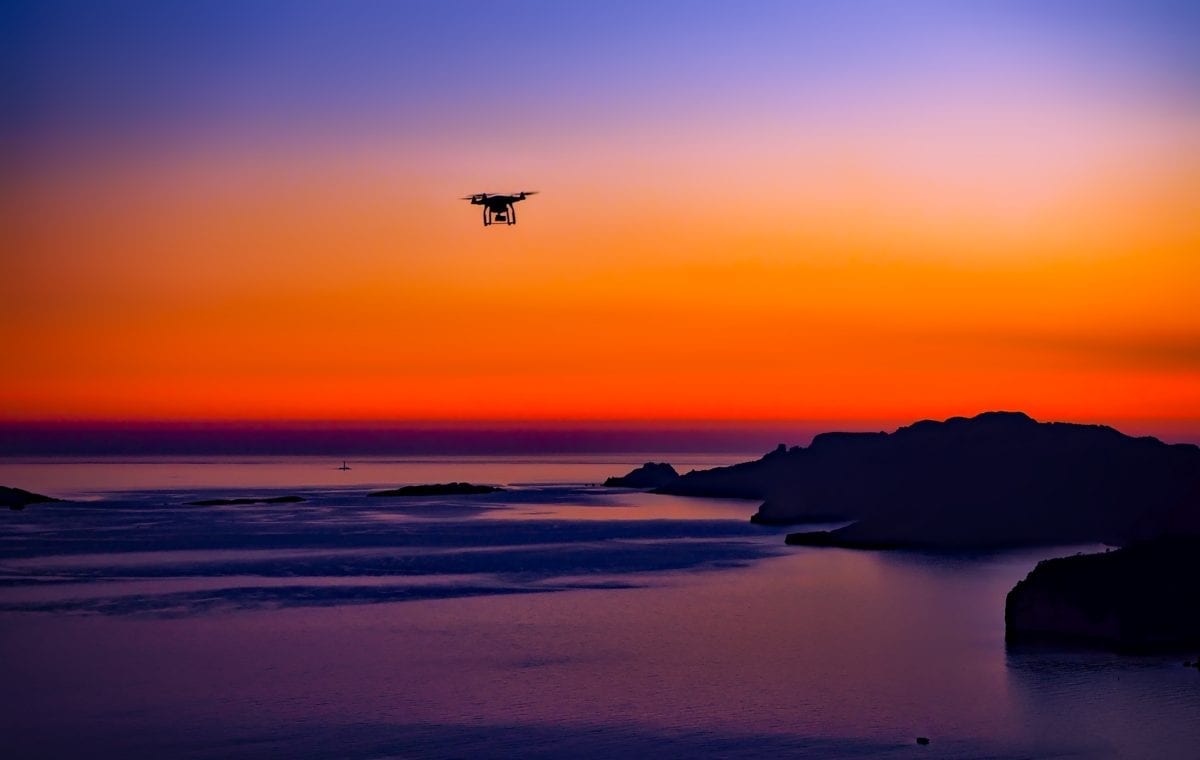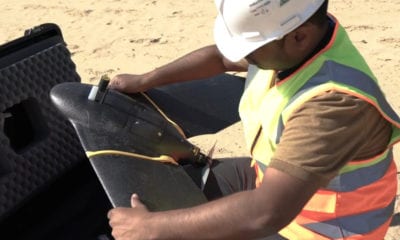News
An Autonomous Marine Vessel with a Drone Look-Out
A recently published article talks about the conception and assumptions of innovative technology under an acronym known as AVAL – relating to Autonomous Vessel with an Air Look that concerns on Unmanned Surface Vehicle (USV) which apply UAV for the collection of further navigation data.
Developing an Autonomous Marine Vessel as Part of Maritime Transportation
In simple words, the aim of the article published by Jolanta Koszelew, Daniel Oldziej and Piotr Wolejsza at the Faculty of Computer Science in Bialystok, Poland – is to develop a technology of autonomous marine vessel that would integrate with the navigation devices, autopilots as well as control systems of today’s modern ships.
Even though this may seem like a standard technology for most, the AVAL is actually a breakthrough innovation in the market of maritime transport – carried out through UAVs which in this aspect will be responsible for observation, detection and recognition of objects in nearby areas.

Pointing Out Facts, Concerns and Potential Staff Shortages in The Industry
In the beginning of the paper, the authors place their statistics regarding the cost of collision and vessel information, stating:
“According to data presented above, the average cost of collision is more than 1,000,000 USD. The Swedish Club shares 13.6% (2010) of hull and machinery insurance global market. There were over 87 thousand merchant vessels in 2015. Around 2.5% of all vessels are in collisions every year i.e. over 2000. In this situation, the total cost of collisions is over 2,000,000,000 USD per year. This covers only hull and machinery expenses. Cost of human life, loss of cargo and environment pollution are much higher.”
With this, the authors directly state the facts about this technology and note how important a safe technology actually is in maritime transport – an industry which paid around $30 billion USD to insurers in 2015 alone.
On top of this, the authors conclude that the lack of 40,000 commercial fleet officers by 2020 will mean that at least 5,000 ships will be without a staff – which is why and how their proposed technology can help – especially in times when the industry will suffer from major staff shortages.
The Components of AVAL Technology and Their Applications
As the authors present it, the AVAL technology consists of three main components which will all be integrated and tested in quasi-real and real conditions, including:
- The technology of unmanned ship (USV – Unmanned Surface Vehicle). The biggest challenge in this field is an anti-collision algorithm and a system of communication between USVs and UAVs. Technology will be used both on unmanned ships (further in the future) as well as those that fulfill the requirements of at least the autonomy level AL3
- The technology of Unmanned Aerial Vehicle (UAV), which takes off and lands on USV and during the flight observes the area around the ship and detects potential dangers. The USV is equipped with a camera and hydro-meteorological sensors to register and transfer to the USV dangerous targets geo-data.
- The image processing, where the key element is a detection algorithm of objects from the images recorded by the UAV. The detection algorithm is focused on objects that are not well “visible” for AIS, Radar/ARPA, and which pose a threat to shipping (i.e. pleasure crafts, icebergs, whales, floating containers).”
Bringing Safety in Our Waters Through Communication, Machine Learning and UAVs
Therefore, the aim of the study is to verify the research thesis which implies a strict uncertainty in the area of three technology components. AVAL, on the other hand, is meant to be implemented by a multidisciplinary team of R&D consortium at the Bialystok University in Poland.
The technology aims to prevent collisions in the maritime world – as well as provide effective support for navigators on ships or operators which will lead the ships remotely. The role of UAV here will be even greater – to “see” far more than a navigator and navigational devices and learn from the present machine-learning methods.Speaking of, two types of UAVs will be provided to gather information about potentially dangerous objects (or collisions) for the USVs – in continuous observation.
In times when the possibilities of using UAVs and UASs in marine conditions are known and wide, this paper aims to fully develop them into a system and with that prevent collisions while aligning with the staff shortages in this industry.
Citation: “Autonomous Vessel with an Air Look,” by J. Koszelew, P. Wolejsza and D. Oldziej, 2018 Baltic Geodetic Congress (BGC Geomatics), Olsztyn, Poland, 2018, pp. 102-106.
doi: 10.1109/BGC-Geomatics.2018.00025 | URL: http://ieeexplore.ieee.org/stamp/stamp.jsp?tp=&arnumber=8453674&isnumber=8453649
How useful was this post?
Click on a star to rate it!
Average rating 0 / 5. Vote count: 0
No votes so far! Be the first to rate this post.
We are sorry that this post was not useful for you!
Let us improve this post!
Tell us how we can improve this post?

























